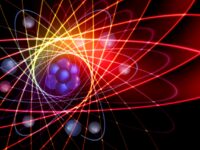Chaos theory says that even the most seemingly random processes can actually be described and predicted using a set of complex mathematical equations. The original equation used to define chaotic activity is the Kuramoto-Sivashinsky equation, which models propagating flames. Using this equation, one can model the chaotic elements of many different processes. For example, in long-term weather prediction, a version of this equation can describe the pattern by which rogue waves and earthquakes occur. In the same way that the Kuramoto-Sivashinsky equation is a giant step in the right direction for solving these seemingly impossible problems, as with most disciplines today, machine learning (ML) has proven to be an invaluable addition to the study of chaos theory.
In the same way that the Kuramoto-Sivashinsky equation is a giant step in the right direction for solving these seemingly impossible problems, as with most disciplines today, machine learning (ML) has proven to be an invaluable addition.
A machine learning model is an analytical tool capable of generating knowledgeable predictions for new inputs. The practice of using ML models in place of equations to determine chaos can be exemplified by weather prediction. Instead of predicting weather using a complex mathematical system to represent various components of the atmosphere, an ML model determines its own complex, “invisible” rules based on subtle patterns in the data.
One way to combine ML models with equations for chaos theory solving is to train an ML model on solution data obtained from the Kuramoto-Sivashinsky equation. To generate predictions with greater accuracy, the ML model learns patterns in the data and uses these “invisible rules” to produce more accurate solutions to the chaos problem. The original application of this combination was to predict movement of propagating flames. However, the combination of ML models and chaos theory equations can be applied to any long-term prediction task, including predicting fashion trends, weather, or music.
An important characteristic of ML models used in conjunction with equations is the incorporation of reservoir computing. Reservoir computing is the idea of mapping input signals to a higher dimensional computation system using a non-linearity, which is any function that does not follow a linear or direct relation pattern. A human example of reservoir computing is when context words are used to determine the meaning of an unfamiliar word. Instead of using only the characters in the given word, humans will consider the known words around the given word to determine the meaning.
In chaos theory, prediction time, which is the distance into the future a model can predict, is measured in a unit called Lyapunov time, or the amount of time it takes for two near-identical states in a chaotic system to exponentially diverge. Using a reservoir computing ML model in conjunction with the Kuramoto-Sivashinsky equation, chaos theorists at the University of Maryland were able to predict eight Lyapunov times into the future for a model predicting movement of propagating flames. This means that this model was able to predict eight times farther into the future than any other method.
Machine learning modeling of chaos can monitor a heart for an impending heart attack and, in combination with medical devices, send impulses to the heart to prevent arrhythmia.
The benefits to using chaos theory with the coupled use of chaos theory equations and machine learning are numerous and span across almost all disciplines. Machine learning modeling of chaos can be used for nearly any long-range prediction task, which has applications in social science, healthcare and almost every other discipline. A well-developed chaos model can facilitate long-term weather prediction models, help treat sleep disorders and heart disease, and even be used for music production to predict the best next notes of the song. Machine learning modeling of chaos can monitor a heart for an impending heart attack and, in combination with medical devices, send impulses to the heart to prevent arrhythmia. Combining the historical “rule-based” mathematical systems with the rapidly developing field of machine learning has led to an increase in accuracy of the prediction of chaos and, as the field advances further, has the potential to benefit a wide variety of disciplines.
Sources:
1. Hybrid Forecasting of Chaotic Processes: Using Machine Learning in Conjunction with a Knowledge-Based Model (2018). DOI: 10.1063/1.5028373
2. Artificial Intelligence, Chaos, Prediction and Understanding in Science (2020).
3. A Novel Chaos Theory Inspired Neuronal Architecture (2019). DOI:10.1109/GCAT47503.2019.8978360
Image courtesy of Flickr



